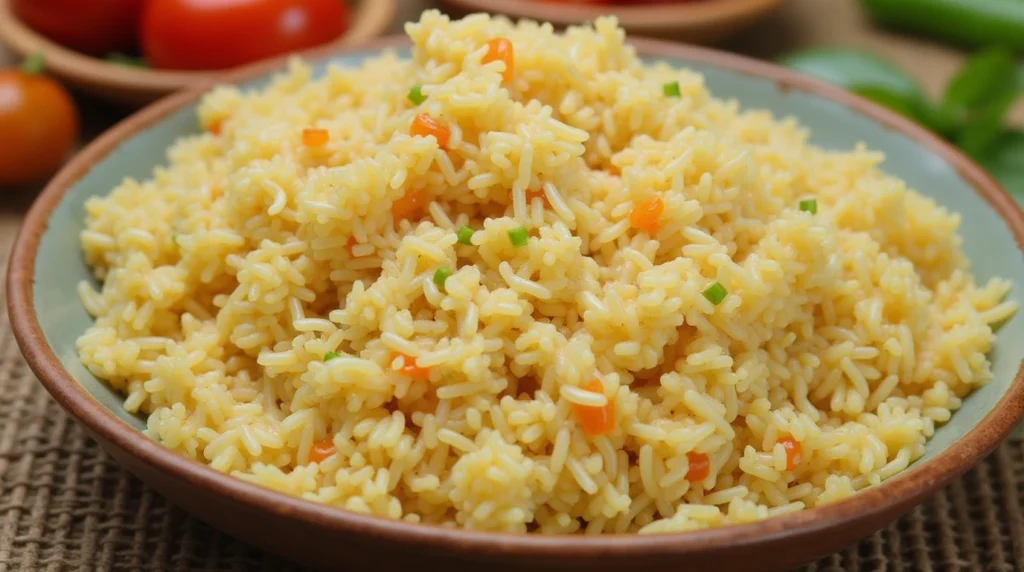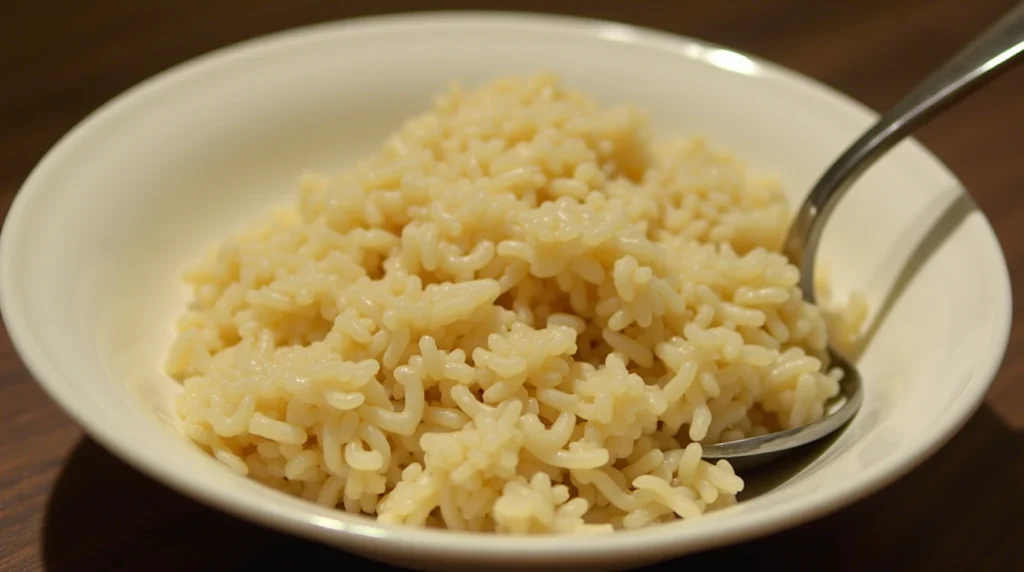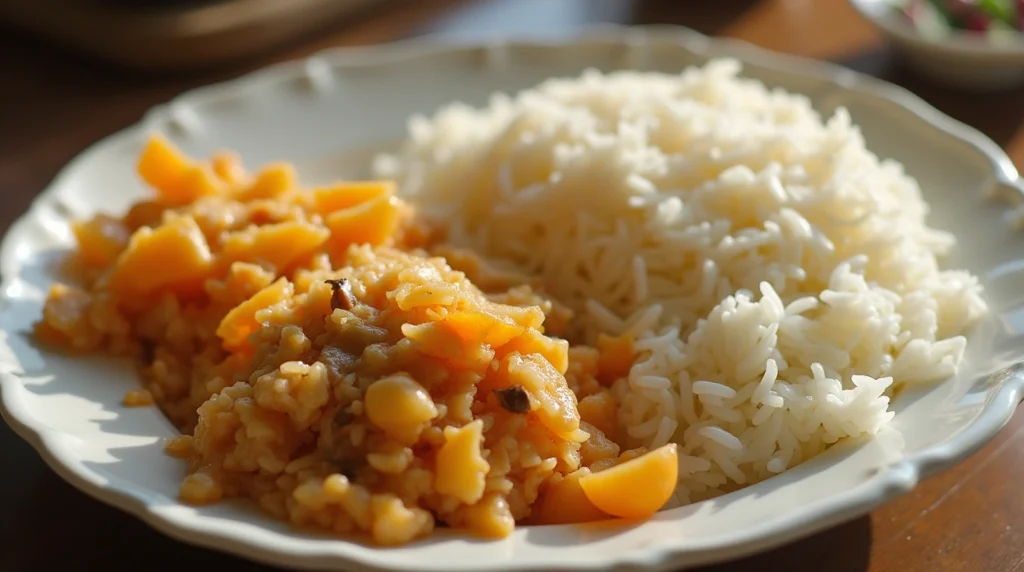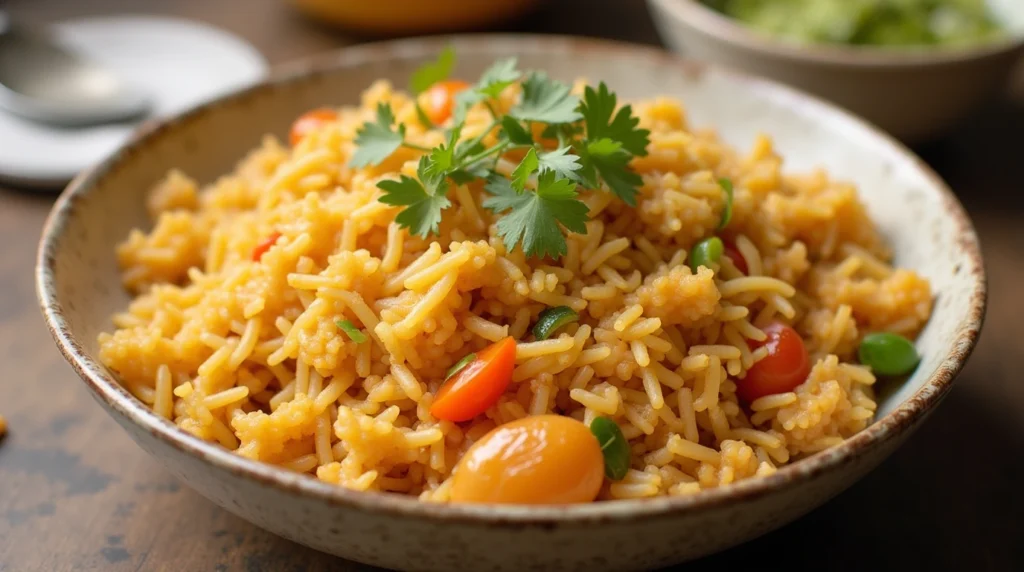Introduction: Understanding the Health Aspects of Rice

Rice is more than just a side dish—it’s a staple food enjoyed by billions of people worldwide. Whether it’s part of your favorite curry, stir-fry, or sushi, rice has a comforting, versatile presence on dinner tables across the globe. But how healthy is rice, really? Can you enjoy it guilt-free, or should you think twice before adding it to your plate?
In this article, we’ll dive deep into the health benefits and potential concerns of consuming rice, providing you with the information you need to make informed choices for a balanced diet. From its nutritional profile to its effects on blood sugar levels and weight management, you’ll discover whether rice deserves a permanent spot in your healthy eating plan.
The Nutritional Value of Rice
Rice may be simple, but it’s packed with essential nutrients. Let’s break down what makes rice a key player in many diets.
Rice and Its Essential Nutrients
Rice is primarily composed of carbohydrates, but it’s also a source of other important nutrients. Here’s a look at the key elements found in rice:
- Carbohydrates: Rice is a rich source of energy, providing your body with the fuel it needs to function.
- Protein: Although rice is not as high in protein as meat or legumes, it still offers a moderate amount of this essential nutrient.
- Fiber: The fiber content in rice varies depending on the type. Brown rice has more fiber than white rice, which is crucial for digestive health.
- Vitamins: Rice provides a small amount of B vitamins, which are essential for energy metabolism.
- Minerals: Rice contains minerals like iron, magnesium, and selenium, which are vital for overall health.
Brown Rice vs White Rice: A Nutritional Comparison
When it comes to rice, not all options are created equal. Here’s how brown rice and white rice compare nutritionally:
- Brown Rice: Brown rice is a whole grain that retains its bran and germ, making it higher in fiber, B vitamins, and antioxidants. It’s a better choice for those looking to increase their intake of whole grains.
- White Rice: White rice has been stripped of the bran and germ, which means it has fewer nutrients. However, it still provides a quick source of energy and is often enriched with iron and folic acid.
Gluten-Free and Vegan-Friendly Rice
Rice is naturally gluten-free, making it an excellent option for people with celiac disease or gluten sensitivity. Additionally, it’s a vegan-friendly food, offering a plant-based source of energy and nutrients.
The Health Benefits of Rice
Rice doesn’t just fill you up—it offers several health benefits when consumed in moderation.
Rice and Heart Health
- Whole grain rice varieties like brown rice, wild rice, and black rice have been linked to improved heart health. These types are high in fiber, which helps lower cholesterol levels, reduce blood pressure, and improve overall cardiovascular health.
- Antioxidants: Brown rice and black rice are rich in antioxidants, which protect your heart and overall health from free radical damage.
Managing Blood Sugar Levels with Rice
- Rice can impact blood sugar levels, particularly white rice, which has a high glycemic index (GI). Consuming foods with a high GI can lead to spikes in blood sugar.
- Brown rice, on the other hand, has a lower glycemic index, making it a better choice for people managing diabetes or those looking to avoid blood sugar spikes.
Rice and Weight Management
- Brown rice may aid in weight management due to its higher fiber content, which helps keep you full longer. The fiber in rice can also help regulate digestion, preventing constipation.
- For those seeking lower-calorie options, cauliflower rice has become a popular substitute, offering fewer calories and more nutrients per serving.
The Potential Downsides of Rice
While rice has its health benefits, there are a few downsides to consider.
The Concern with Arsenic in Rice
- Arsenic is a naturally occurring element that can accumulate in rice, especially in rice grown in regions where arsenic levels in soil and water are high. Long-term exposure to high levels of arsenic can be harmful.
- To reduce arsenic exposure, rinse rice thoroughly before cooking and consider cooking it in excess water, then draining the water to remove any residual arsenic.
Rice and Obesity: The Carb Factor
- Rice is a carbohydrate, and consuming it in excess can contribute to weight gain, especially if it’s part of a diet that’s already high in carbs.
- Portion control is essential to avoid overeating rice, as large servings can lead to an imbalance of calories, potentially resulting in weight gain.
Is White Rice Bad for You?
- While white rice is not inherently “bad,” its lack of fiber and nutrients compared to brown rice means it’s a less optimal choice. It can lead to quick blood sugar spikes and doesn’t offer the sustained energy or nutrients that whole grain rice varieties do.

Best Types of Rice for a Healthy Diet
Not all rice is created equal. Here’s a look at the best types of rice to incorporate into a health-conscious diet.
Whole Grain Rice: Brown Rice and Wild Rice
- Brown rice is a nutritious whole grain that retains its bran and germ. It’s a great source of fiber, B vitamins, and antioxidants.
- Wild rice is another excellent choice, often considered a whole grain, though technically it’s a grass. It’s high in protein and low in calories.
High-Protein Rice Varieties
- Black rice is rich in antioxidants and protein, making it a great choice for those looking to increase their protein intake. It also contains more fiber and micronutrients compared to white rice.
Rice Alternatives: Cauliflower Rice and Quinoa
- For those looking to reduce their carb intake, cauliflower rice is a low-calorie, nutrient-dense substitute.
- Quinoa, while not technically rice, is a protein-packed alternative that can be used in similar ways to rice.
How to Incorporate Rice Into a Balanced Diet
Rice can be part of a healthy eating plan when used in the right way. Here’s how to incorporate it into your diet for maximum benefits.
Healthy Rice Dishes to Try
- Vegetable Rice Pilaf: A great way to boost the nutritional content of your meal by adding vegetables to your rice.
- Brown Rice Stir Fry: A delicious, easy meal that combines brown rice with lean proteins and vegetables.
- Rice-based soups: Such as rice and lentil soup, which can be a filling and nutritious meal.
Portion Control with Rice
- Keep your rice portions in check to maintain a balanced diet. A typical serving size of cooked rice is about ½ to 1 cup per person.
Pairing Rice with Nutritious Ingredients
- Rice pairs well with lean proteins (chicken, tofu, fish) and vegetables to create a well-balanced, nutrient-rich meal. Add healthy fats like olive oil or avocado to round out your dish.
The Nutritional Value of Rice
Rice and Its Essential Nutrients
- Carbohydrates: The primary macronutrient in rice, making it an excellent energy source.
- Energy Supply: Rice provides a quick source of energy, especially important for physically active individuals.
- Complex Carbs in Brown Rice: Brown rice has more fiber and is digested more slowly, which helps regulate blood sugar levels.
- Protein: Rice is a moderate source of plant-based protein, though not a complete protein.
- Comparison with Other Grains: Rice contains about 4 grams of protein per 1-cup serving, less than quinoa or beans.
- Fiber: Brown rice contains more fiber than white rice.
- Digestive Health: Fiber aids in digestion, promoting gut health and preventing constipation.
- Blood Sugar Control: Fiber slows down the absorption of sugars, making brown rice a better option for those with blood sugar concerns.
- Vitamins and Minerals:
- Brown Rice: Rich in B-vitamins, including B1, B3, and B6, which are essential for metabolism and energy.
- Iron and Magnesium: Brown rice offers more magnesium than white rice, which is vital for muscle function and nerve health.
Brown Rice vs White Rice: A Nutritional Comparison
- Brown Rice:
- Higher Fiber Content: Helps in reducing cholesterol and improving heart health.
- B Vitamins and Antioxidants: Provides more micronutrients compared to white rice, improving overall nutrition.
- White Rice:
- Refined and Lower in Nutrients: The outer bran and germ are removed, making it lower in fiber and antioxidants.
- Enriched White Rice: Some white rice is fortified with iron and folic acid to replace lost nutrients, but it’s still less nutritious than brown rice.
- When to Choose Which:
- Brown Rice: Ideal for regular, everyday consumption if you’re looking to boost fiber intake and lower cholesterol.
- White Rice: Suitable for those with specific dietary needs or when a lighter, easier-to-digest option is desired.
Gluten-Free and Vegan-Friendly Rice
- Celiac Disease and Gluten Sensitivities: Rice is naturally gluten-free, making it an essential part of a gluten-free diet.
- Vegan Diets: Rice offers a plant-based source of energy, often paired with legumes and vegetables to create a complete vegan meal.
- Considerations for Processed Rice: Ensure that processed or flavored rice products are also free of gluten, as some might contain additives.

The Health Benefits of Rice
Rice and Heart Health
- Whole-Grain Rice and Cardiovascular Health:
- Reduced Risk of Heart Disease: Studies show that consuming whole grains like brown rice can help lower cholesterol levels, which is crucial for heart health.
- High Fiber Content: Fiber helps lower LDL cholesterol, reducing the risk of heart disease.
Managing Blood Sugar Levels with Rice
- The Glycemic Index (GI) of Rice:
- Brown Rice vs White Rice: Brown rice has a lower glycemic index (GI), meaning it causes a slower rise in blood sugar.
- Impact on Diabetic Diets: Lower GI foods are recommended for people with diabetes to help stabilize blood sugar levels.
- Rice and Insulin Sensitivity:
- Fiber’s Role: The fiber in brown rice helps improve insulin sensitivity, which is essential for blood sugar control.
Rice and Weight Management
- Rice as Part of a Weight Loss Diet:
- Low-Calorie Options: Rice can be part of a balanced weight loss plan. Options like cauliflower rice offer lower-calorie alternatives to traditional rice.
- Portion Control: Eating rice in moderation can contribute to weight management. The key is portion control and balancing with vegetables and lean proteins.
- How Rice Fits into a Healthy, Low-Calorie Diet:
- Low-Fat Content: Rice is naturally low in fat, which is beneficial for those on calorie-restricted diets.
The Potential Downsides of Rice
The Concern with Arsenic in Rice
- Why Arsenic in Rice is a Concern:
- Rice Absorbs Arsenic: Rice tends to absorb arsenic from the soil more than other crops, especially in areas where groundwater contamination is an issue.
- Minimizing Arsenic Exposure:
- Rinse Your Rice: Washing rice thoroughly before cooking can reduce the arsenic content.
- Cooking with Extra Water: Use a 6:1 water-to-rice ratio when cooking to help reduce arsenic levels.
- Choosing Low-Arsenic Rice:
- White Rice: Tends to have lower arsenic levels than brown rice due to the removal of the bran.
- Rice From Certain Regions: Rice from regions such as California generally has lower arsenic levels compared to rice grown in areas like Arkansas or Texas.
Rice and Obesity: The Carb Factor
- Rice as a High-Carb Food:
- Portion Size and Carbohydrate Intake: Rice is carbohydrate-dense, and eating large portions regularly can contribute to weight gain.
- Balancing Carbs with Protein and Vegetables: To prevent excessive weight gain, balance rice with protein-rich foods and lots of vegetables.
Is White Rice Bad for You?
- Nutrient Deficiency in White Rice:
- Lack of Fiber and Nutrients: White rice lacks the fiber and essential nutrients found in whole-grain rice, making it a less healthy option.
- Is It Harmful?:
- Occasional Consumption is Fine: White rice is not inherently bad but should be consumed in moderation and as part of a balanced diet.

Conclusion: Is Rice a Healthy Food Choice?
Rice is undoubtedly a versatile and widely loved food, but its healthfulness depends on the type you choose and how you incorporate it into your diet. Whole grain varieties like brown rice and wild rice are packed with nutrients, fiber, and antioxidants, making them the healthiest options. While rice can be part of a healthy diet, it’s important to consider portion control and make mindful choices about the types of rice you eat.
By balancing rice with plenty of vegetables, lean proteins, and healthy fats, you can enjoy its benefits without compromising your health. Keep in mind the potential concerns, such as arsenic content and the carb factor, and make adjustments to suit your individual health goals.
FAQ Section
1. How healthy is rice for you?
Rice can be a healthy part of your diet, especially when you choose whole-grain options like brown rice. It provides essential nutrients like carbohydrates, fiber, and antioxidants. However, it’s important to consider portion size and choose varieties that are less processed for maximum benefits.
2. Is brown rice healthier than white rice?
Yes, brown rice is healthier than white rice. Brown rice retains its bran and germ, making it higher in fiber, B vitamins, and minerals, while white rice is lower in nutrients due to the removal of these parts.
3. Can rice help with weight loss?
Rice can be part of a weight-loss plan when eaten in moderation. Opt for lower-calorie rice options like cauliflower rice, or choose whole grain varieties that provide more fiber to help you feel full longer.
4. Does rice cause high blood sugar?
Rice, particularly white rice, has a high glycemic index and can cause spikes in blood sugar. If you’re managing diabetes or blood sugar levels, consider opting for brown rice or other whole grain varieties, which have a lower glycemic index.
5. What are the healthiest rice alternatives?
Healthier alternatives to traditional rice include quinoa, cauliflower rice, and wild rice. These options are often lower in carbs and higher in protein and fiber, making them great choices for health-conscious individuals.
